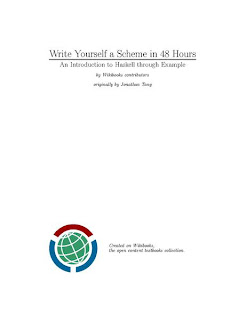Most Haskell tutorials on the web seem to take a language-reference-manual approach to teaching. They show you the syntax of the language, a few language constructs, and then have you construct a few simple functions at the interactive prompt. The "hard stuff" of how to write a functioning, useful program is left to the end, or sometimes omitted entirely.
This tutorial takes a different tack. You'll start off with command-line arguments and parsing, and progress to writing a fully-functional Scheme interpreter that implements a good-sized subset of R5RS Scheme. Along the way, you'll learn Haskell's I/O, mutable state, dynamic typing, error handling, and parsing features. By the time you finish, you should be fairly fluent in both Haskell and Scheme.
There are two main audiences targeted by this tutorial:
This tutorial takes a different tack. You'll start off with command-line arguments and parsing, and progress to writing a fully-functional Scheme interpreter that implements a good-sized subset of R5RS Scheme. Along the way, you'll learn Haskell's I/O, mutable state, dynamic typing, error handling, and parsing features. By the time you finish, you should be fairly fluent in both Haskell and Scheme.
There are two main audiences targeted by this tutorial:
- People who already know Lisp or Scheme and want to learn Haskell
- People who don't know any programming language, but have a strong quantitative background and are familiar with computers



No comments:
Post a Comment